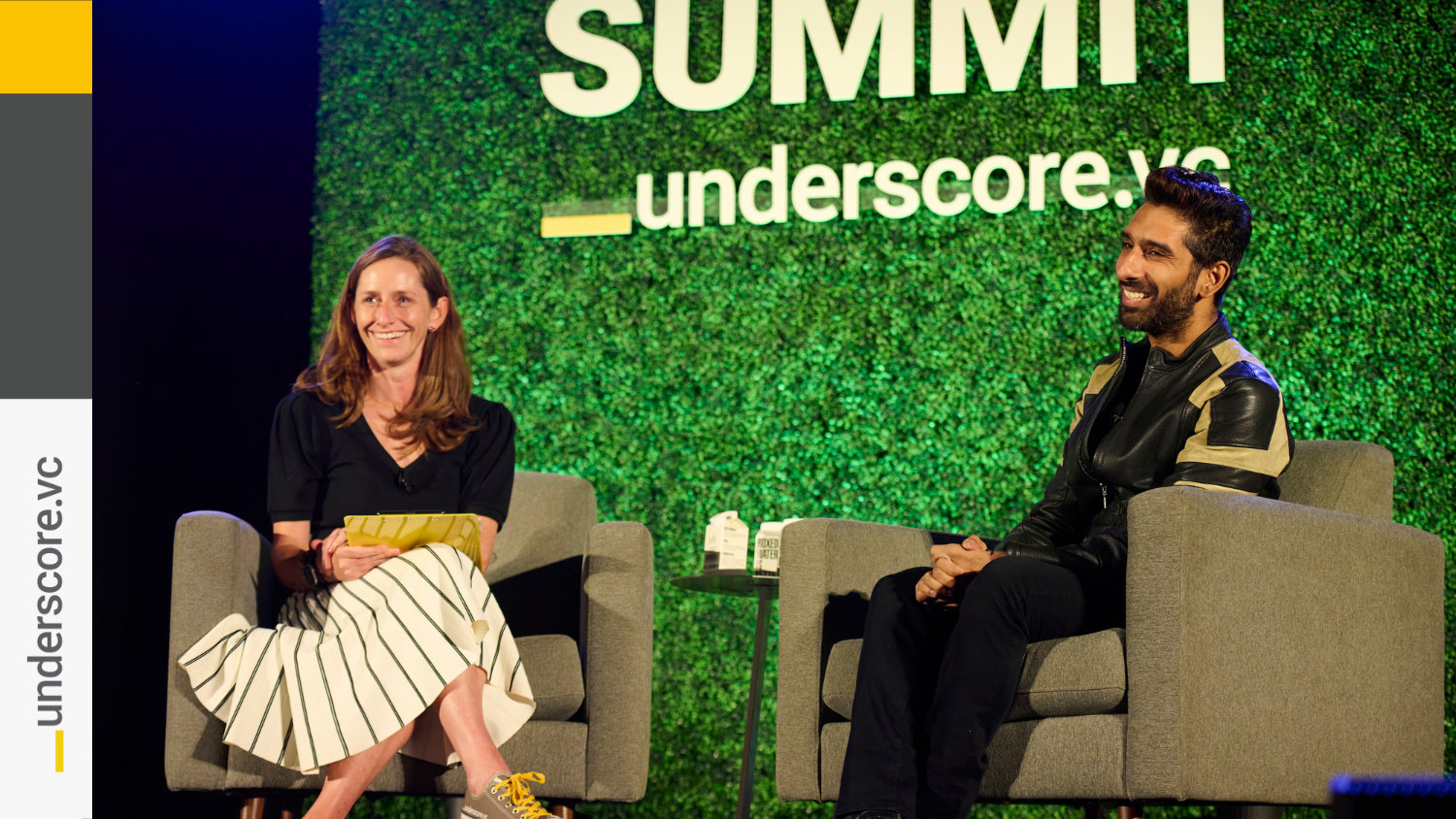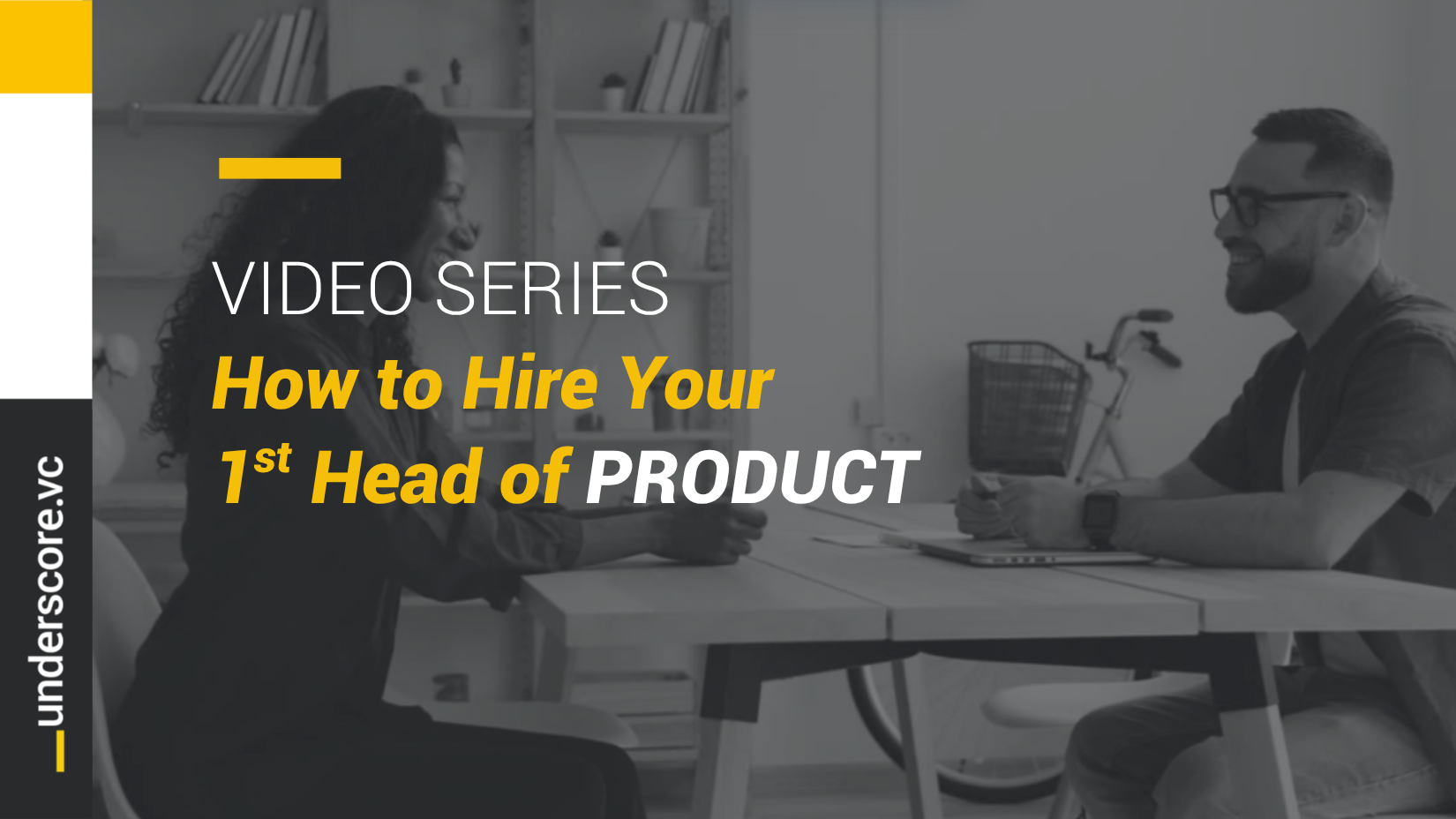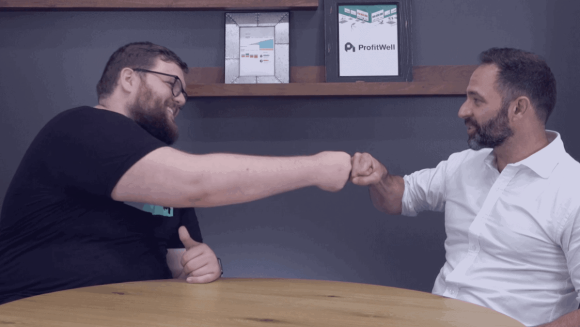Rahul Vohra, Founder and CEO of Superhuman, is building the fastest email experience in the world. As a seasoned, repeat entrepreneur, he is widely known for his expertise in product strategy and entrepreneurship—especially his unique approach to finding product-market fit.
In a headliner session at the 2023 Core Summit, Underscore partner Lily Lyman sat down with Rahul to discuss his product expertise and more, starting with: How do you know when you’re ready to launch a new product?
When Are You Ready to Launch?
There are some common sayings: Ship it and learn, or, You should feel slightly embarrassed about your first version. “That only applies when you’re building a product for a new market, where there’s no replacement or existing substitute,” says Rahul.
Instead, he and his team spent nearly two years building Superhuman before launch. While that might seem like a tremendous amount of time in the software world, Rahul points out that target customers already had highly functional email tools. “We were asking people to stop using Gmail and to use our product instead,” he says. “That’s a very, very high bar.”
Superhuman needed to be unique, differentiated, and provide a significant advantage over existing email products. How would he do that? Through game design.
Game Design: Focusing on User Fun
Most software companies focus on users’ wants and needs, “but no one needs a game to exist,” says Rahul.
“When your product is a game fundamentally, people don’t just use it—they play it,” adds Rahul. “They find it fun, fall in love with it, and tell their friends about it.”
Building software like a game is a different kind of product development. So while the Superhuman team cared about what users need, they cared even more about how users feel. They designed game loops and applied them to their email tool.
And at a certain point, Rahul’s litmus test for launching was simple: Would he switch over?
Around the two-year mark, he realized, “You know what? I think I would.” Sure, there were still some bugs and missing features, but “there was enough magic that I would make the switch.”
The Product-Market Fit Engine
Once he launched the product, Rahul set out to understand the intangible—did Superhuman have product-market fit (PMF)? At the time, standard advice was, You know it when you have it.
But Rahul wanted to get beyond that. Instead, he sought to define PMF, determine how to measure it, and design a fool-proof system to create a roadmap that helps startups reach it. This First Round Review article outlines the framework in detail, but at a high level:
He defined PMF by asking customers: How would you feel if you could no longer use this product? They could choose from the following answers:
- Very disappointed
- Somewhat disappointed
- Not disappointed
He then determined that if 40% or more say “very disappointed,” that’s a marker of early product-market fit. “But that doesn’t mean your work is over,” says Rahul. “It’s just the beginning.”
From there, it becomes a system to build out a product roadmap.
Segment
Take your “How would you feel if you could no longer use this product?” response data and segment it by the three groups: very disappointed, somewhat disappointed, and not disappointed.
Focus
From there, Rahul mentions he “politely disregards” both the “not disappointed” segment and the “very disappointed” segment. “You’re trying to optimize,” he says. And when you do, you grow the segment of the pie that would be “very disappointed” if someone took it away.
Re-Segment
Within the “somewhat” segment, there are likely two camps: one group for whom the main benefit resonates, and one for whom the benefit does not.
In Superhuman’s case, the main benefit is speed: Users get through their emails twice as fast as before and reply to emails a whole day sooner.
To see if they’re aligned, Rahul asks: What do you think the main benefit of this product is for you?
For users aligned with Superhuman’s main benefit, they probe further:
- What do you love about the product?
- What holds you back from loving it?
“Usually, something small holds them back,” says Rahul. And addressing those features becomes Superhuman’s product roadmap. And in doing so, he expands the share of people who love the product.
Following the Methodology
After sharing this overview, Rahul discussed some challenges with implementing his methodology. And it depends on what type of team you’re on.
From Rahul’s perspective, there tend to be two different types: vision teams and data teams.
Vision teams typically build what the founder believes should exist. “They reach initial PMF by creating something special,” says Rahul. “But to sustain PMF over time while expanding your market, they need to start listening to data.”
On the other hand, data teams typically build what the data tells them from day one. “They listen to data way too much, which makes it much harder to get to initial PMF,” says Rahul.
But success depends on finding a happy medium. Rahul recommends spending roughly half your time doubling down on what people love about your product. “That’s the vision-oriented stuff,” he says. “It’s probably the crazy thing that you believed.”
And then, about half the time, Rahul recommends systematically overcoming the objections of the “somewhat disappointed” crowd for whom the main benefit resonates.“That will increase your PMF score,” says Rahul.
“You can tweak this balance,” he adds. “Sometimes we do 60/40, sometimes we do 80/20, but starting with a 50/50 split is helpful.”













